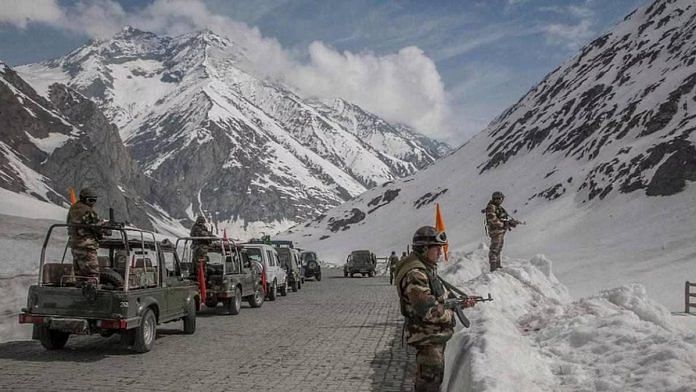
New Delhi: As India’s tensions with China continue, the Army has fast-tracked the development and implementation of its new battle management system and setting up of integrated surveillance centres that aim to reduce decision-making time.
Sources in the defence and security establishment told ThePrint that with information and intelligence becoming a key factor in wars, the Army has also invested in captive data centres in the country and has therefore acquired substantial capability to host applications.
The data centres will be fully operational by this year, sources said.
One of the key projects that the Army has been focusing on is Project SAMA, which will act as its new battlefield management system.
Sources said the Army’s Combat Information Decision Support System (CIDSS) has been re-designed as the Army Information and Decision Support System (AIDSS), which will integrate inputs from all operational and managerial information systems.
In the interim, the Army has developed an in-house decision support system called the Situational Awareness Module for the Army (SAMA).
The application has been designed to present the comprehensive battlefield picture to commanders at all levels based on authorisation and roles.
SAMA is being fielded this month for validation in a corps zone.
Sources said the idea is to cut down the decision-making process for a commander.
“He [a commander] is able to get the entire information on one screen and he can fine-tune the dashboard as per his wish and priority area. He can also give instructions through the app,” a source said.
Also Read: War, payment issues impact military supplies to India from Russia & Ukraine. IAF worst hit
Integrated surveillance, digital situation reporting
Another major ongoing project is ‘Sanjay’, which has undergone extensive validation in field trials carried out in plains, deserts, and finally in mountainous terrain between August and October last year.
Project Sanjay will enable integration of several thousand sensors (like cameras, movement sensors etc) and shall enable provision of an integrated surveillance picture to commanders and staff at all levels.
State-run Bharat Electronics (BEL) is the project’s system integrator, and they have been contracted with the supply which is now being progressed further for delivery of several integrated surveillance centres for the field formations by December 2025.
Another key project is the digital situation reporting known as SITREP.
Situational reporting is the keystone of all operational correspondence that happens on a perpetual basis, and this is the lifeblood that keeps the operational staff working.
While this workflow has matured over the years, over the past few months it has undergone a major transformation.
“Commencing June this year, the situational reporting would start happening on an enterprise-class GIS platform configured for the Army’s operational needs, with a state-of-the-art spatial visualisation, temporal and dynamic querying and analytics custom-built for commanders and staff according to authorisation rules,” another source said.
The system will be first operationalised in the Army’s Northern Command in June 2023 and the balance commands will migrate to the new system later.
The Army has also tied up with the National Centre for Medium Range Weather Forecasting (NCMRWF) for helping the artillery fire more accurately. This collaboration has led to the development of an application called Anuman.
Meteorological inputs are of great significance to commanders in the field. The artillery unit uses them on a regular basis to temper its weapon platforms before firing projectiles through the Earth’s atmosphere.
Also, inspired by the PM Gatishakti programme, the Army has emulated the platform’s design and has begun its own initiative to build a similar project that will bring in multi-domain spatial awareness on a single GIS platform.
The concept will be operationalised in a phased manner and in the first phase the project named Avagat will bring together inputs from the operational domain, logistic inputs of selected nature, satellite imagery data, topographic and metrological inputs on a common platform and the system is expected to be fully operational towards the year-end, sources said.
Also read: Seconds before Army ALH crash that killed soldier, pilot reported technical fault to ATC

COMMENTS